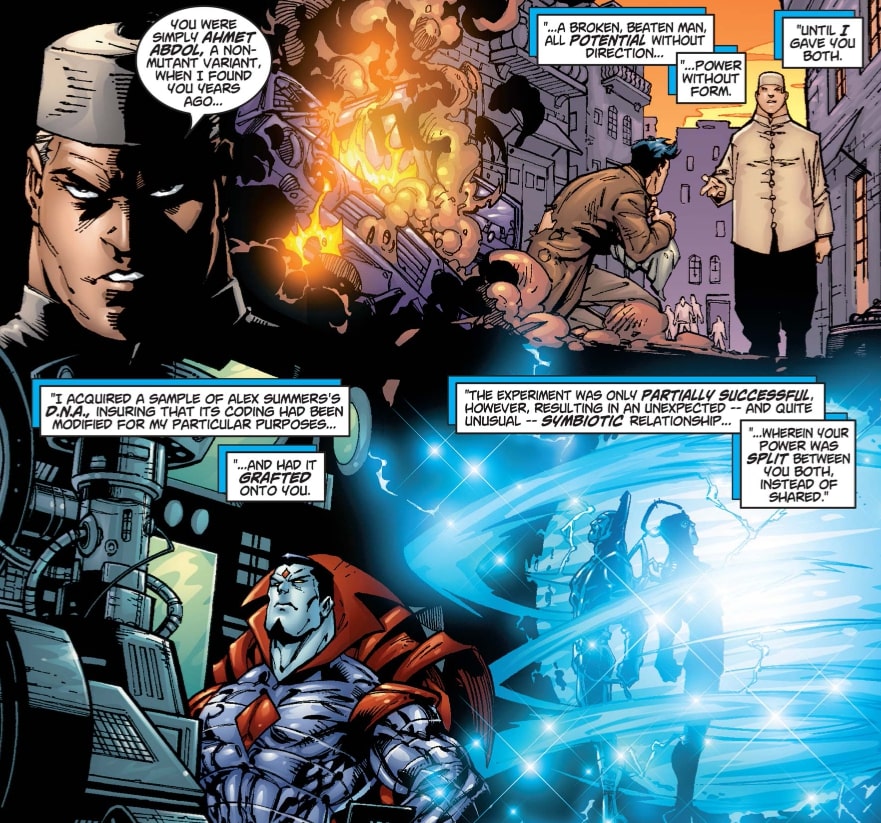X-MEN #54 (1969)
by Arnold Drake & Don Heck
cover by Barry Windsor-Smith
Arnold Drake is far better known as a DC writer, mostly for co-creating Deadman and the Doom Patrol. His Marvel work has had less of an impact, with the exception of the original Guardians Of The Galaxy (which he created) and his X-Men run, which… only ran for 7 issues, and this is the last one.

Still, it does have an impact for introducing Alex Summers, the brother of Cyclops who will become the superhero Havok.
His introduction is a bit clunky: Cyclops has been an orphan with no relatives for 53 issues, and then with absolutely no introduction we jump to him attending Alex’s graduation.
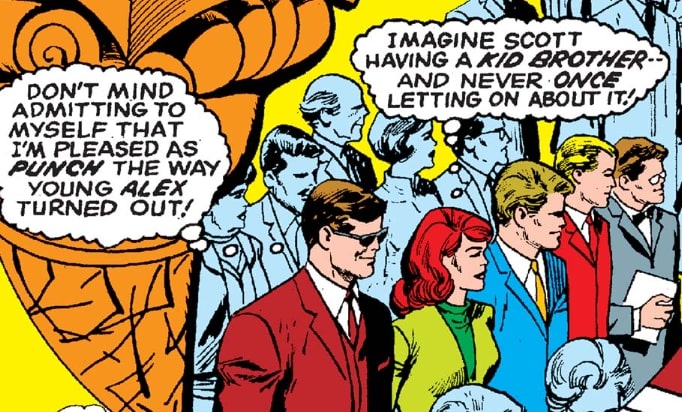
This caused a bit of a discussion about the ages of the characters. Alex is supposed to be younger than Cyclops, but he’s already shown graduating college.

I find it fascinating that the idea that the mutants aren’t only special because of their powers, but they’re also generally better than humans either physically or mentally… just refuses to die!
It shows up inconsistently, but you can find examples from the 60s, through the 80s (as we’ve seen even on Dazzler) all the way to the 2000s and beyond.
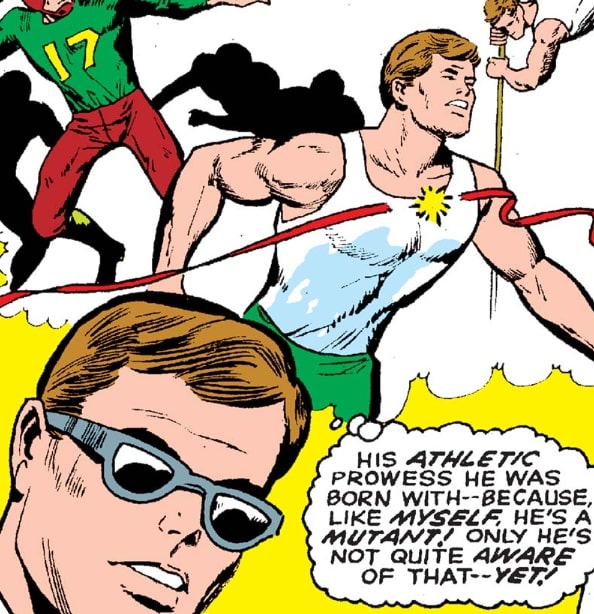
Scott and Alex already know each other at the beginning of the story. As far as I know, the actual first meeting between the two brothers has never been shown (they were too young to remember when they lost their parents).
Also, Alex has brown hair in his first appearance instead of his usual blond… I wonder if this was to avoid confusing him with Angel? Iceman also has brown hair, so maybe not.
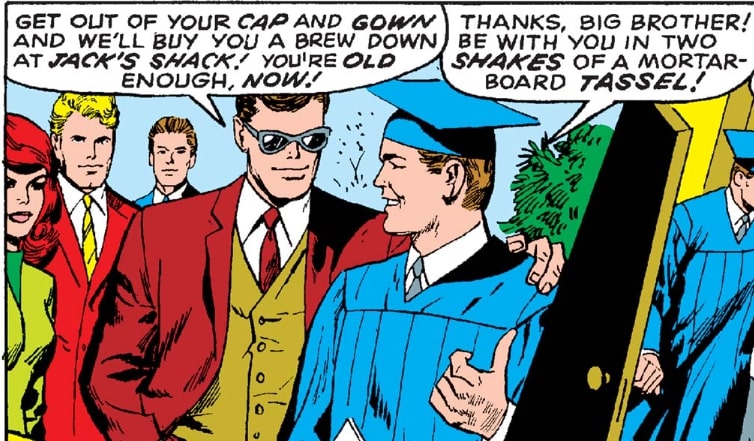
And then Alex is kidnapped by goons dressed as colorblind Ancient Egyptians!!!
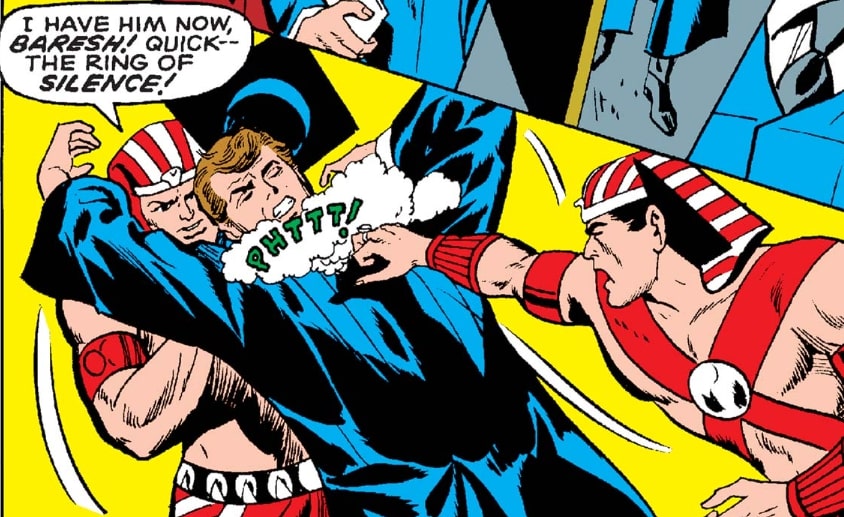
Jean Grey has developed telepathy from the last time we saw her in my reviews (in addition to her originally being only a telekinetic). But apparently we’re still in the era when mental powers could be vague enough to do stuff like this:
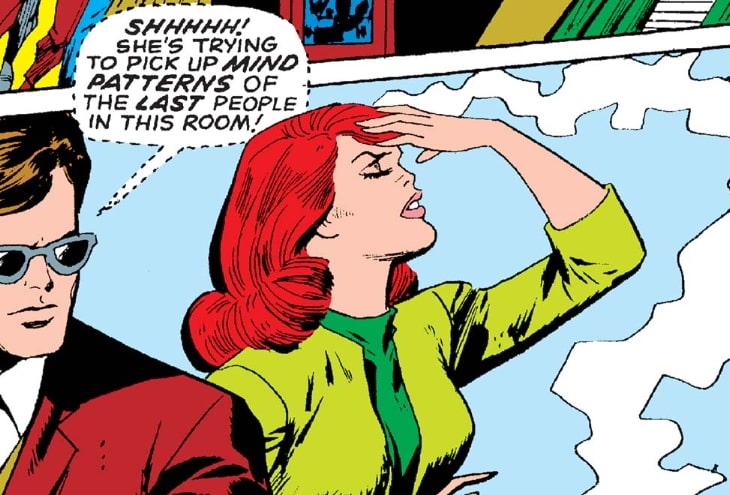
Alex has been kidnapped by our bad guy of this storyline: the Living Pharaoh.

We are VERY close to the arrival of Neal Adams on pencils; one of the things he introduced was a nontraditional panel arrangement.
So it’s weird to see the VERY traditional Don Heck attempt something similar… with just awful results. Admittedly it’s not entirely his fault: they clearly hadn’t figured out how to use speech balloons with this technique!

The X-Men show up to fight the Living Pharaoh, who turns out to have vaguely defined energy powers and keeps speaking mythological nonsense (even confusing Egyptian myths with Greek ones).
Also the X-Men have new costumes now, including one of the all-time worst ones: check out Angel’s truly awful suspenders!
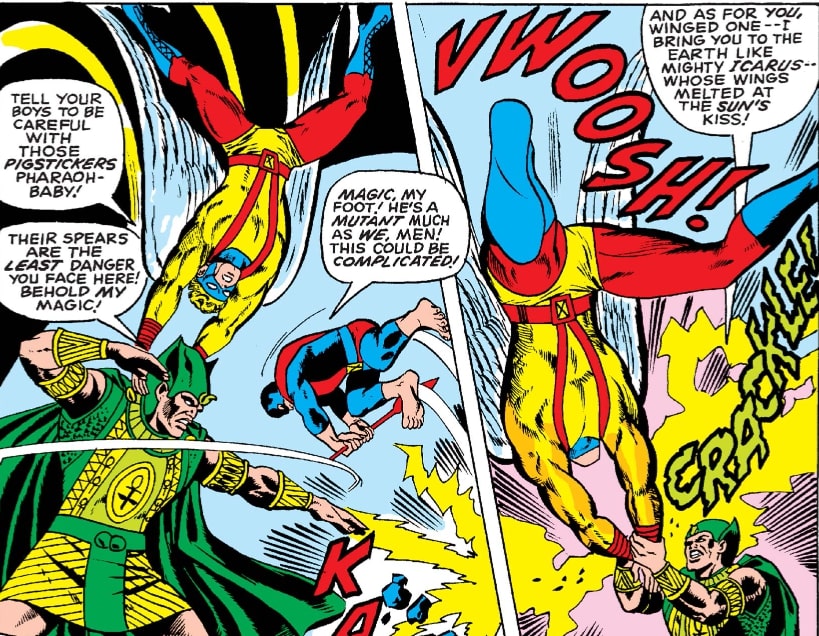
Normally I absolutely love when comics mixes genres, but… I don’t know exactly why, but the Living Pharaoh feels EXTREMELY out of place here.
Also what’s up with the X-Men being so skeptical about him having magic powers?
Guys, one of your enemies is the Juggernaut! YOU KNOW MAGIC EXISTS!!!
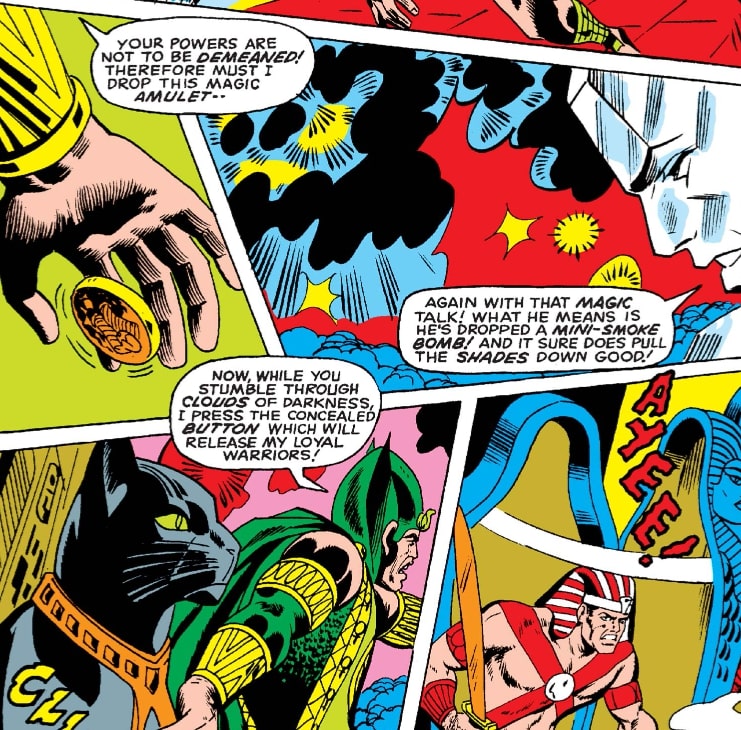
The Pharaoh’s goons are no trouble for the heroes, but he’s surprisingly hard to defeat because he seems to have a counter for any mutant power.
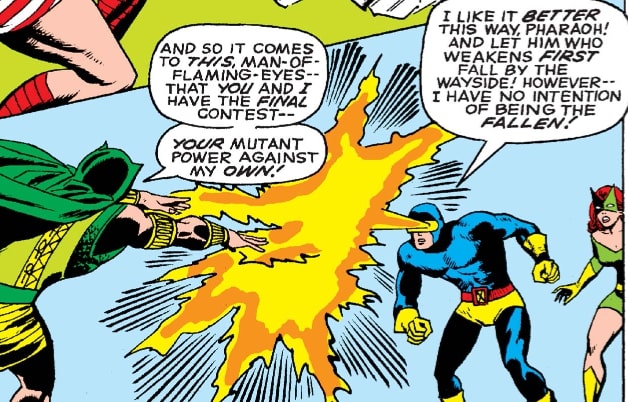
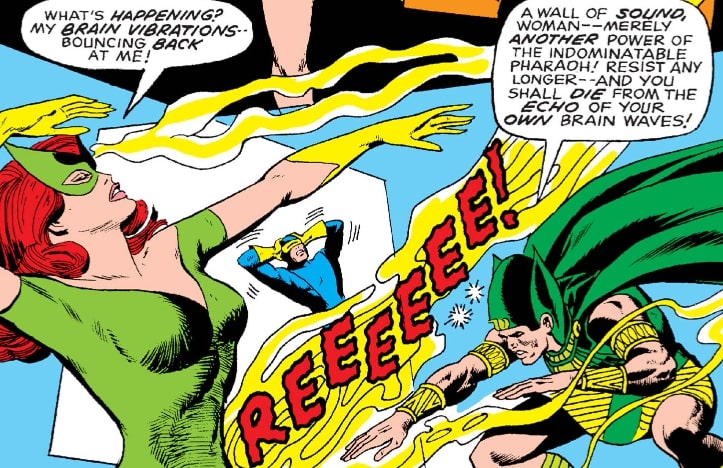
At least they manage to free Alex and… wait, so they’ve known each other all this time? That makes the fact that Cyclops NEVER mentioned having a brother even weirder.

Also, while we are FAR from the peak years of mutant hysteria… were the X-Men really that popular in-universe?
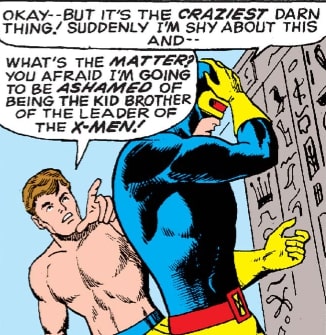
Guys, maybe compare notes about your past AFTER you have defeated the supervillain!?!?
Also, another thing about the Living Pharaoh that doesn’t work: is he using his vaguely defined mutant powers or it’s all about gadgets and/or magic items? You can’t have both!!!
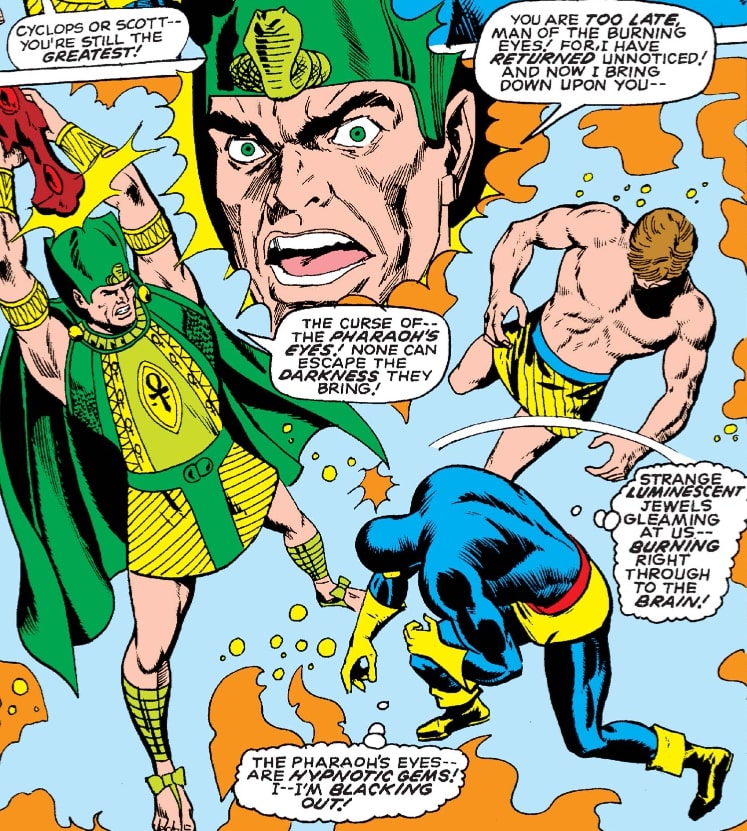
All of this has been a giant flashback narrated by Cyclops, and once we return to the present day he’s accused of the murder of the Living Pharaoh.
Well, I guess he’s just “the Pharaoh” now.
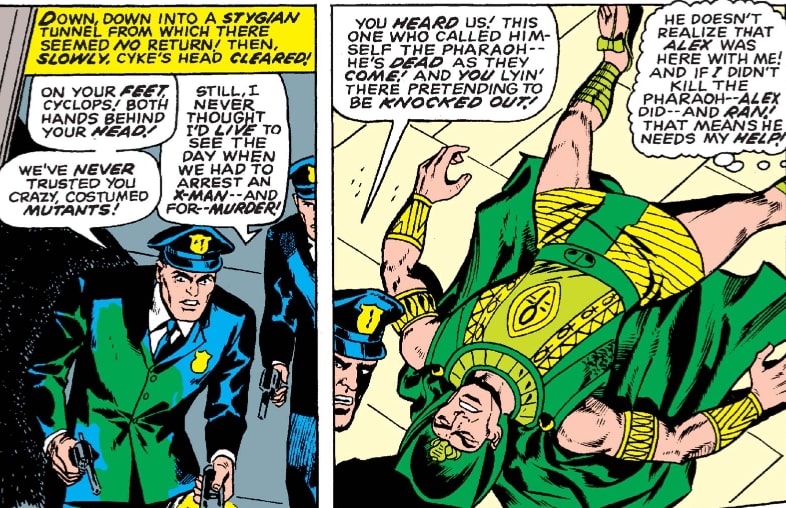
What the… guys, nobody expects you to believe Cyclops murder the No Longer Living Pharaoh, YOU WERE THERE DURING THE FIGHT!!! The readers didn’t see the conclusion to the fight, sure, but YOU WERE THERE!!!

And so we end the issue with Cyclops investigating the “natural tunnels” beneath the villain’s headquarters (???) to discover that the Living Pharaoh is *gasp* alive!!!

Well duh. It’s in the name.
Before we continue: the issue also has a short story (also written by Arnold Drake, with Werner Roth artwork) about Angel’s origins.
I bring this up to show the continuation of the idea that mutants are just better than humans in everything, even without powers.
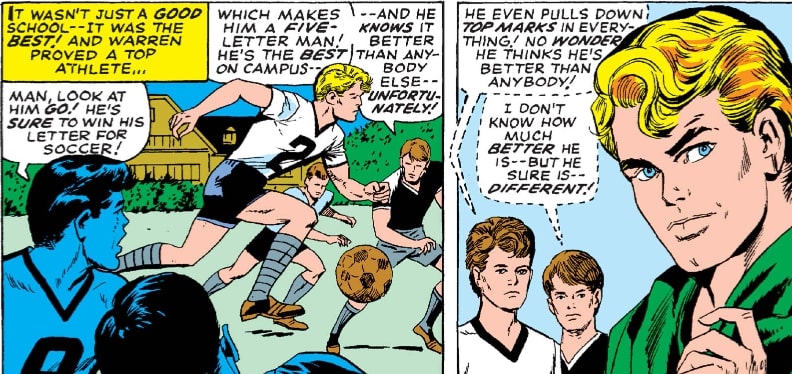
And also for the weirdest taunt ever. Who gets bullied for their shoulder blades!?

As bad as the suspenders costume is awful… at least it could’ve been worse.

X-MEN #55 (1969)
written by Roy Thomas
layouts by Don Heck
pencils by Werner Roth
cover by Barry Windsor-Smith
Imagine buying a book with Windsor-Smith artwork and then finding out the rest is by Don Heck and Werner Roth.
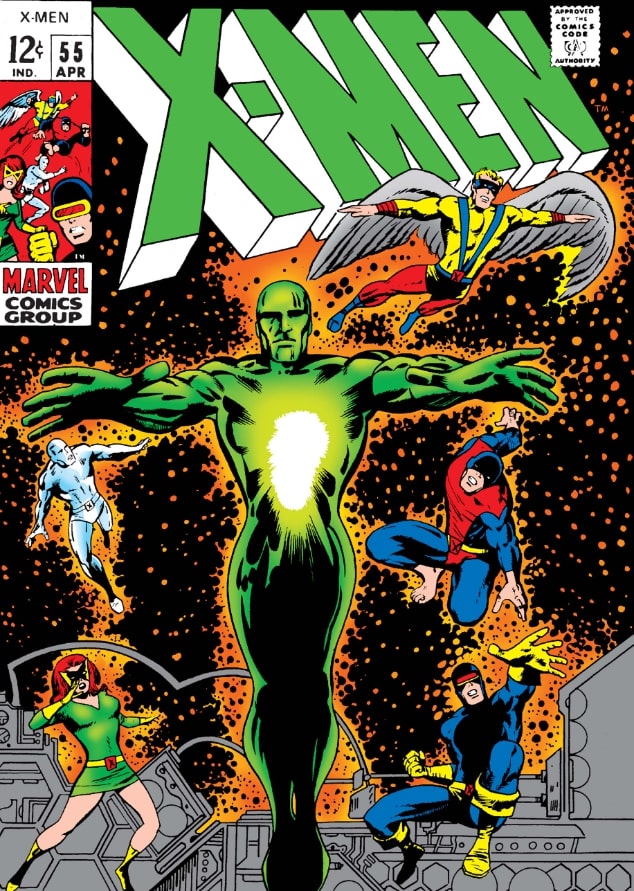
Cyclops decides he can’t just knock out the Living Pharaoh because he needs him to find Alex.
Sounds legit.
It’s not like YOU HAVE A TELEPATH ON THE TEAM and you used her powers to track people LAST ISSUE.

Seriously, the Living Pharaoh should NOT give you this much trouble, Cyclops.

The Living Pharaoh, who I remind you has ill-defined energy powers and several high-tech gadgets at his disposal, defeats Cyclops by… bonking him on the head.
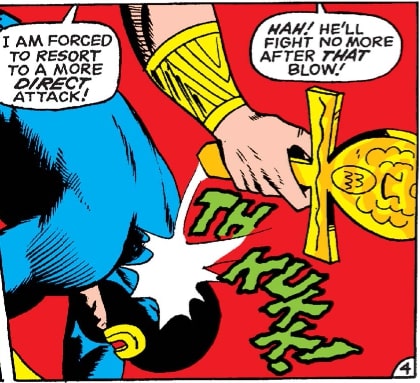
Even his goons… who can’t be that smart if they’re working for the Living Pharaoh… question WTF is he doing.

How funny is the fact that Havok being shipped to Egypt inside a sarcophagus isn’t even in the top fifty weirdest things that happened to him?

The Living Pharaoh and his goons have an uninspired look; but the mask they gave Cyclops to prevent him from using his powers is by far their best design.
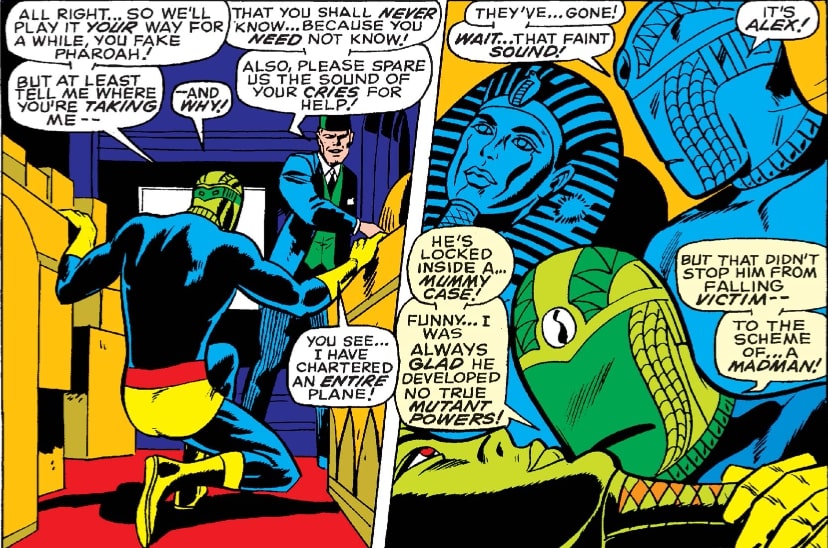
The X-Men catch up to the Living Pharaoh with their airship (just go with it) aaaand they immediately fail.

The Living Pharaoh brings Cyclops to his secret base in Egypt, because of course, and I like just how unimpressed Cyclops is.
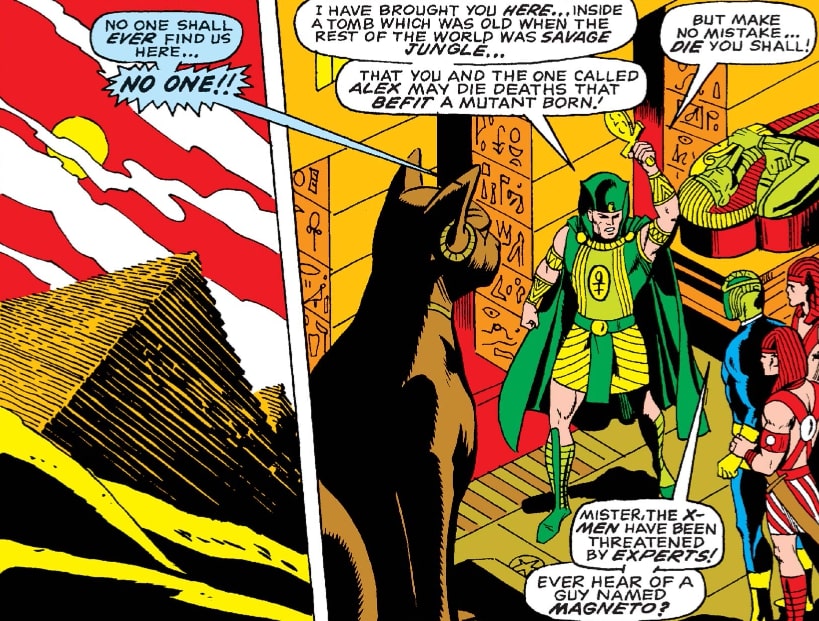
Then Cyclops is able to free Alex by… banging his head against the sarcophagus.
Points for originality, I guess?

Come on, I know Alex hasn’t discovered his powers yet, but… Cyclops against a bunch of regular people with swords? How does this fight last more than two seconds!?
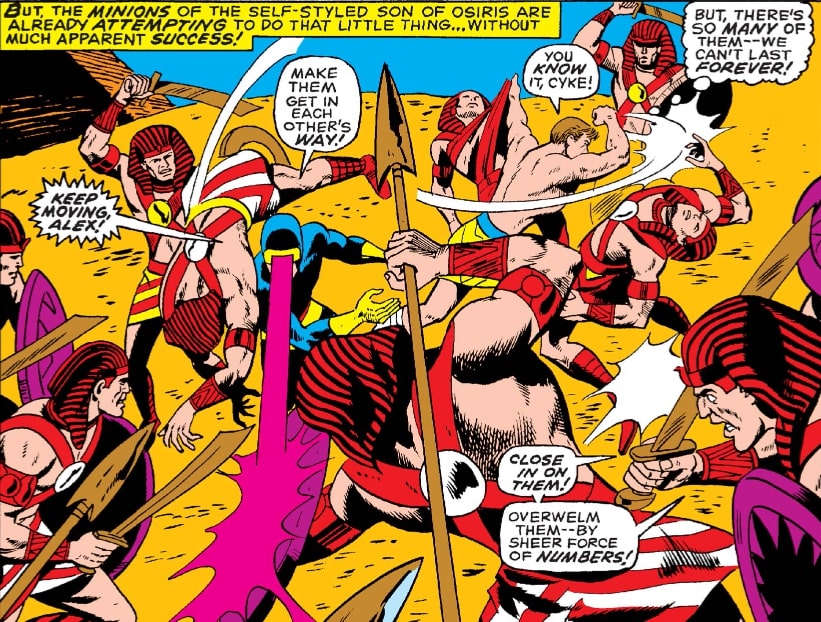
Living Pharaoh… you really suck, don’t you?


Ah, Roy Thomas, subtle as always. You just couldn’t resist practically shouting that Alex secretly has powers, isn’t it?
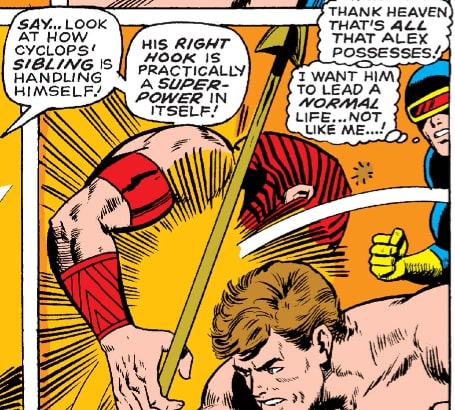
Wait… the Living Pharaoh already knew Alex has powers, but then he’s shocked when he uses them against him? WTF!?
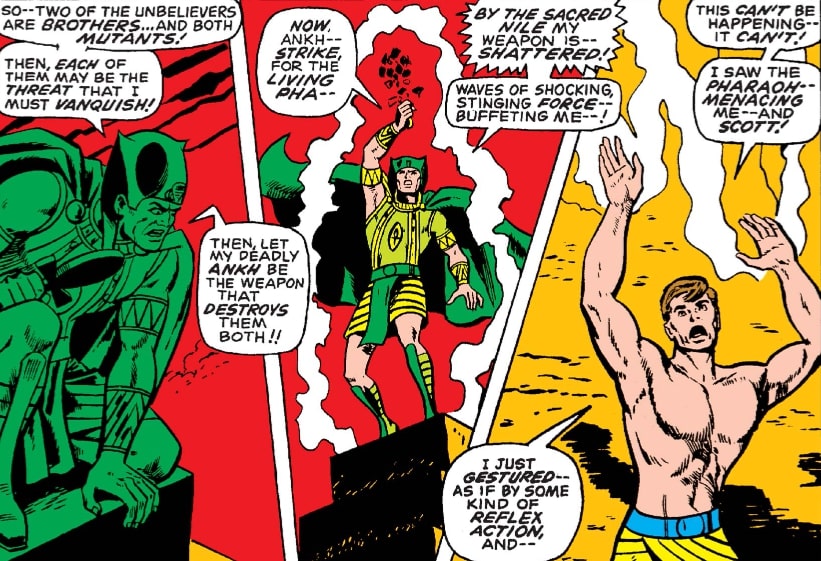
Yeah based on that panel I can totally believe Alex is not human.

Angel, did you also bash your head against a sarcophagus? Yes the Living Pharaoh had vaguely defined powers earlier, but he already sucked!!!

The Living Pharaoh and his goons escape (HOW!?) and we end on the shocking revelation that Alex is also a mutant!!!

Okay I get why HE finds it shocking, but… why does it shock YOU, Jean!?

This issue also has a backup story about Angel with Werner Roth pencils, but it’s written by Roy Thomas.
And it features Angel with… honestly? Probably the best costume he’s ever had!

This is a little known fact, because as far as I can tell it’s never referenced again outside of these backup stories, but… Angel had an extremely brief superhero career BEFORE joining the X-Men, as the “Avenging Angel”!!!

Considering Thomas just loved shoehorning Golden Age references everywhere, even if they couldn’t possibly fit, I’m very surprised he didn’t attempt to link him to the Golden Age hero who was also named Angel.
I’ve said before that I’m not the biggest Angel fan… but I really like this interpretation! In my opinion, he would’ve fit FAR better as a street-level hero than as part of a team.
The halo calling card is just great.

Don’t tell me you don’t see a perfect team-up with Spider-Man from this setup.

X-MEN #56 (1969)
by Roy Thomas & Neal Adams
Told you we weren’t far from Neal Adams!!!
I always like covers where characters interact with the title, and this is one of the classics.
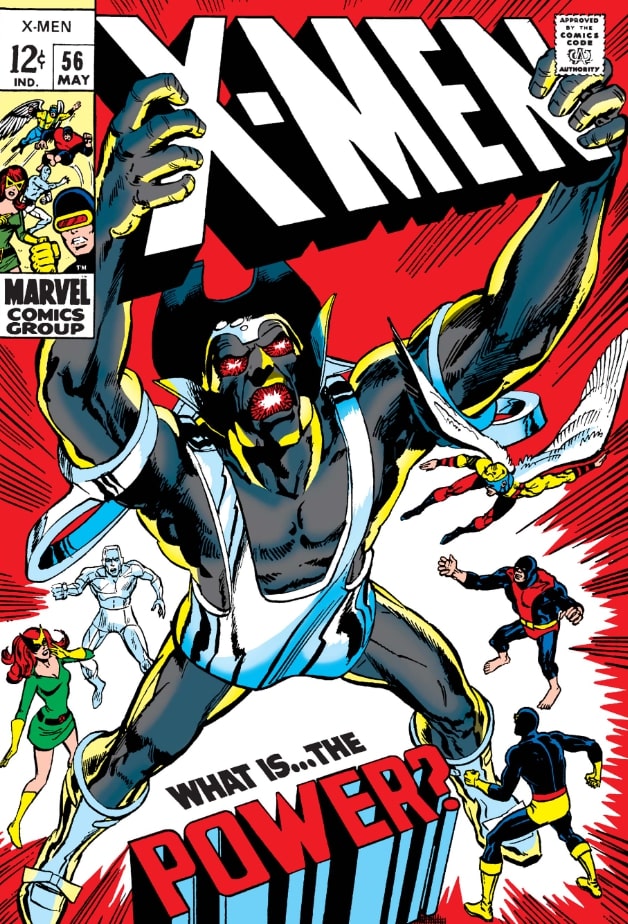
No disrespect for Don Heck and Werner Roth, but… holy crap is this a giant leap in quality!!!
The X-Men find the Living Pharaoh and his goons excavating some ruins. This leads to, you guessed it, a big dumb fight.



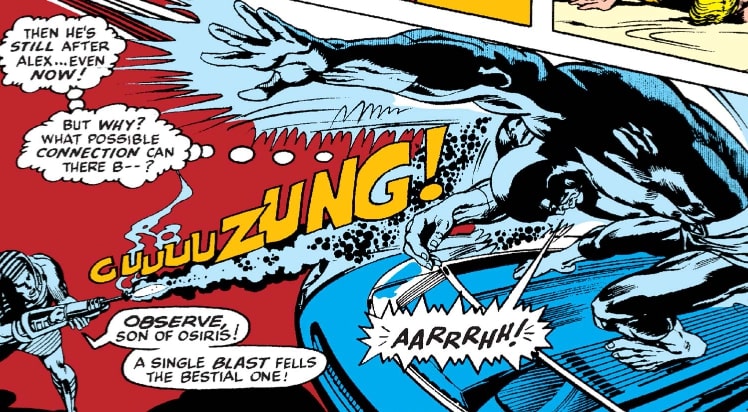
Seriously, it’s really hard to decide which panels to show because this is all great stuff!!!
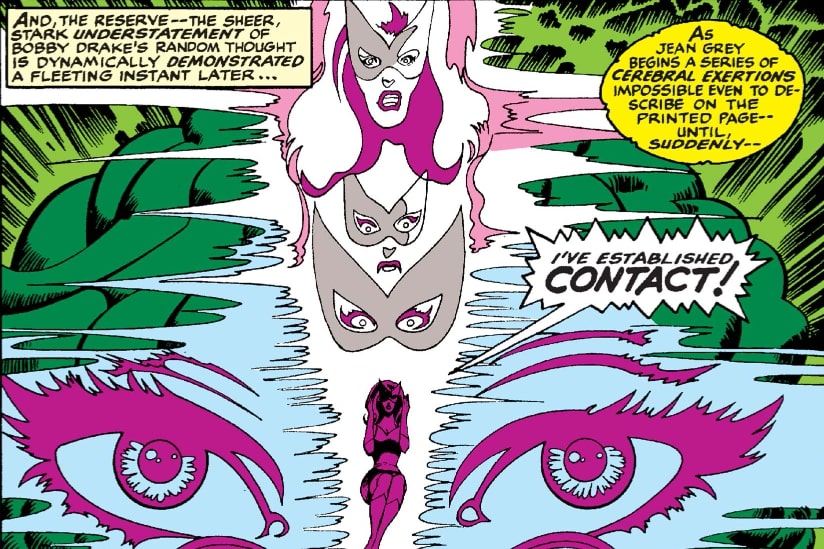
But I’ll try to focus on the story. Angel is the one following the Living Pharaoh to his OTHER base, with Jean Grey keeping telepathic contact.
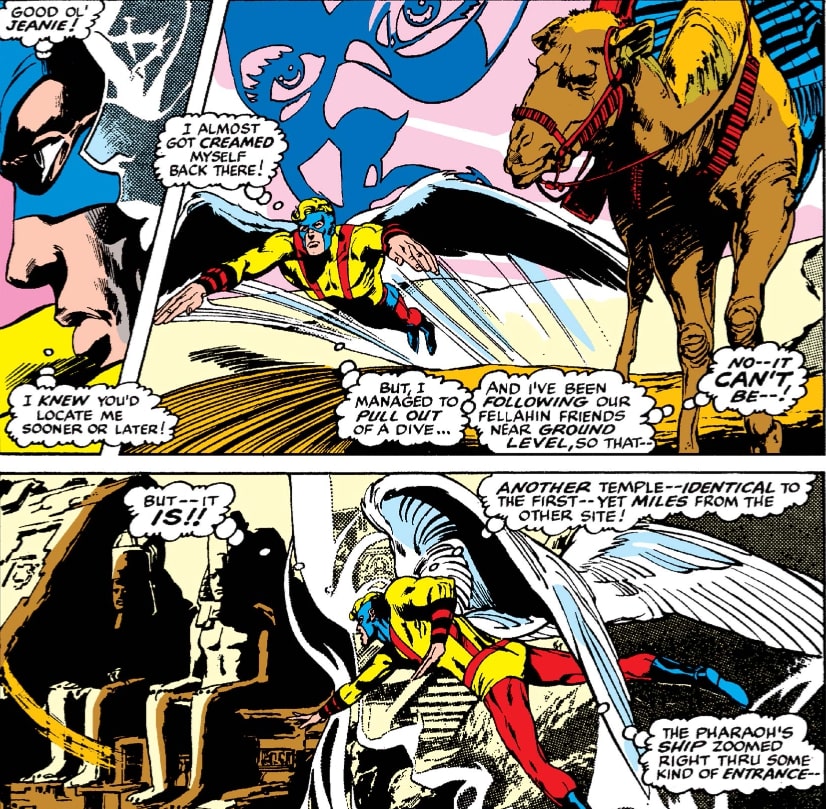
Okay so we’ve been following the Living Pharaoh for some time now… WTF is his deal!?

He’s an archeology, which explains why he has all this high-tech and an army of fanatical henchmen… if you’ve been banging your head on a sarcophagus.
He also SOMEHOW knows that his powers are linked to Alex’s powers, something particularly impressive since Alex doesn’t even KNOW what his powers are!!!
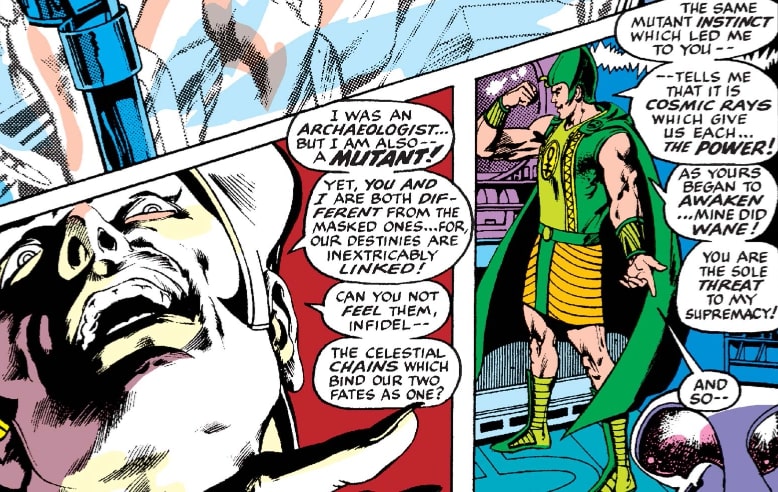
Thanks to his machines, the Living Pharaoh absorbs “cosmic energy” from Alex to transform into his FAR more powerful form: the Living Monolith.

He’s not THAT impressive here, but what an upgrade from the lame Living Pharaoh!!!

He’s also SOMEHOW convinced that the Pharaohs of Ancient Egypt were mutants with similar powers. Which isn’t THAT far-fetched in an universe where Rama-Tut existed, but as far as I know we’ve never seen mutant Pharaohs (although of course Apocalypse IS from Ancient Egypt).

Then Alex re-absorbs all the powers from the Living Monolith, which turns out to be a really bad idea.

X-MEN #57 (1969)
by Roy Thomas & Neal Adams
The Living Monolith left such an impact that the issue following his introduction focuses on a different giant-size enemy.
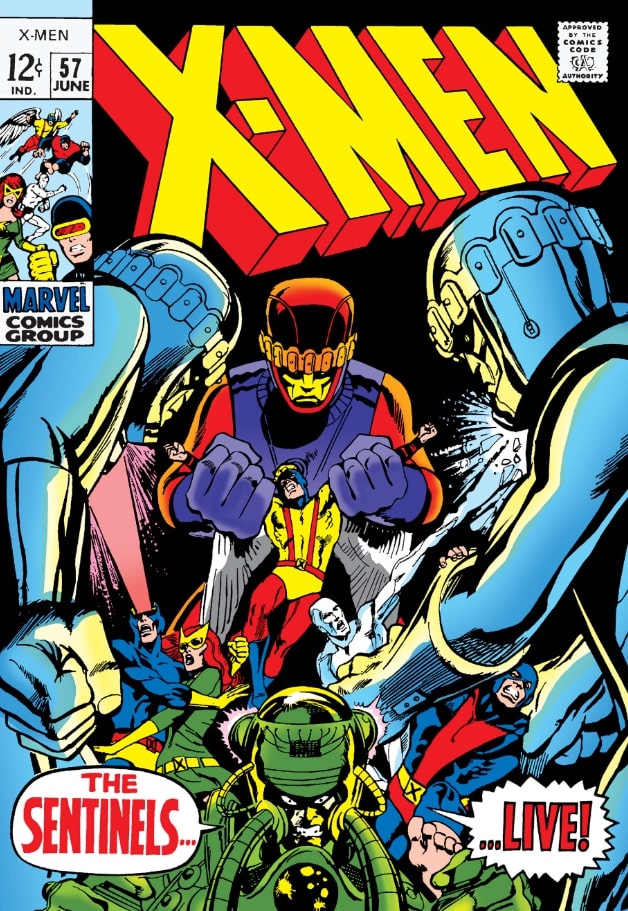
Uh-oh. The Marvel Unlimited digital version starts with a disclaimer that we’re going to see some racism, so we’re off to a great start here.

As you guessed by the cover this is only partially related to the Living Pharaoh, so I’m going to skip most of it. But I have to mention one of the most creative, and most risqué, superheroine costumes of the era: Polaris (who didn’t even have a costume, or even a codename, before this).

Here’s the basic explanation of what happened: Living Pharaoh SOMEHOW knew that Alex’s mutant power is to absorb cosmic energy to convert it into destructive force, AND that his own power was to absorb Alex’s.
And not only Alex is unable to control himself now that he’s absorbed back all the energy, the process apparently turned him into a blond.
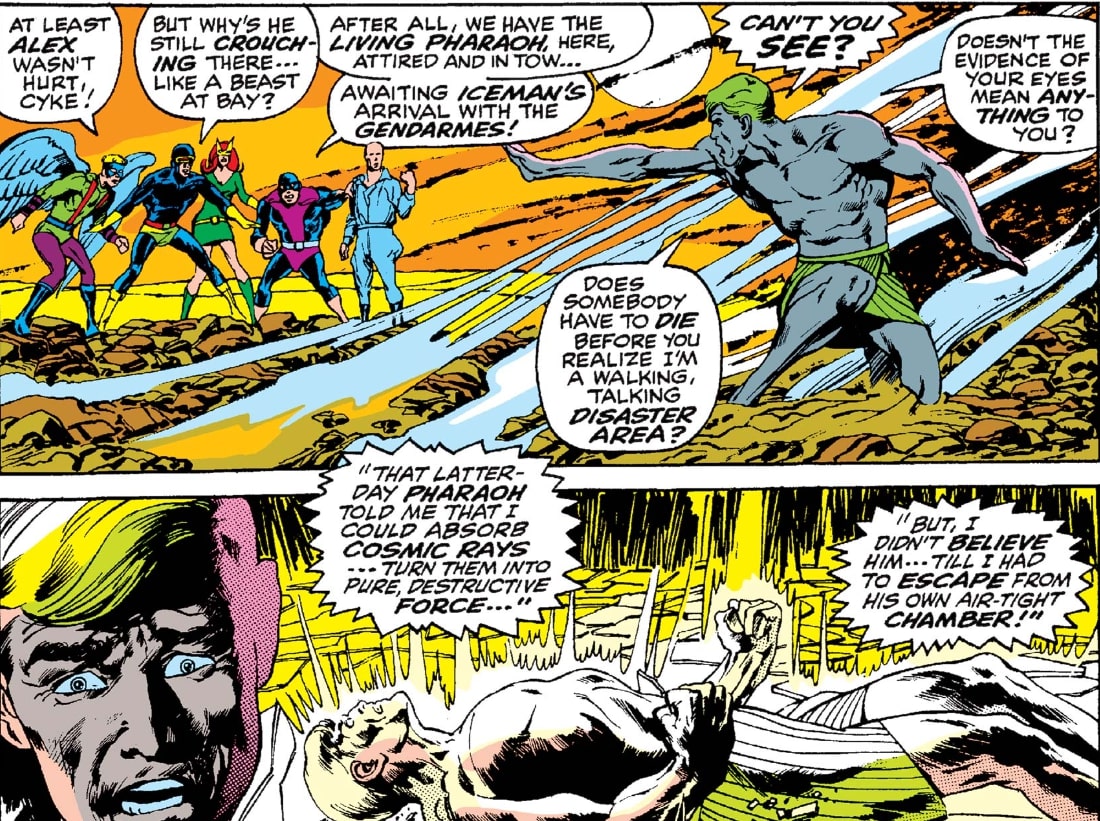
The Living Monolith wasn’t just transformed back into the Living Pharaoh: he was turned back into an archeologist.

The archeologist convinces the Egyptians to attack the X-Men, and… I guess this is the racist part we were warned about? Considering the stuff you usually find in the early 60s, this is extremely mild.

Soooo… we’re told Cyclops uses a “wide-angle blast”, but… we can all agree these guys are dead, right?
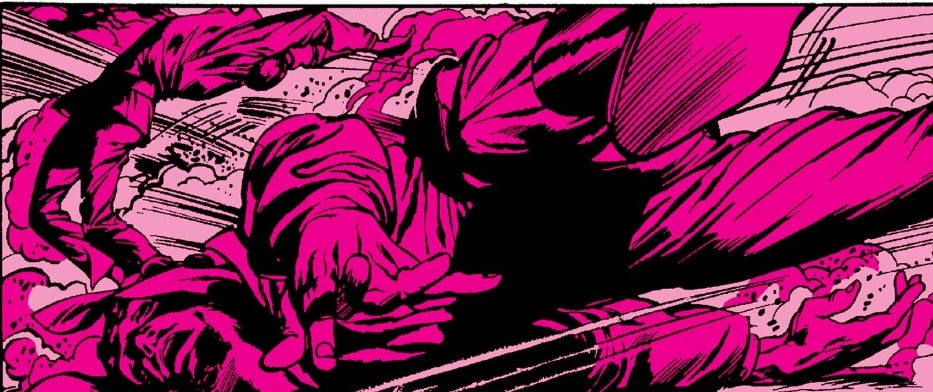
And again the X-Men are worried about never be able to find someone! Despite the fact that their telepath already found both Alex AND the Living Pharaoh in the previous issues!!!
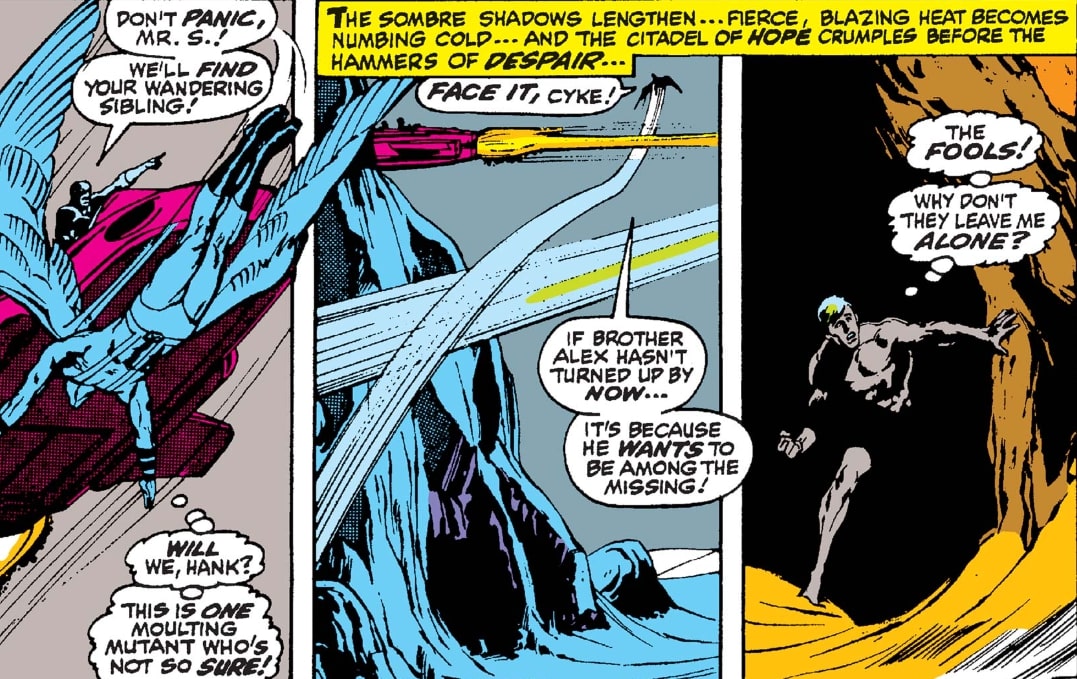
The rest of the issue has the Sentinels kidnap Alex, and I’m dropping this because it’s going way too off-topic for the Living Pharaoh.
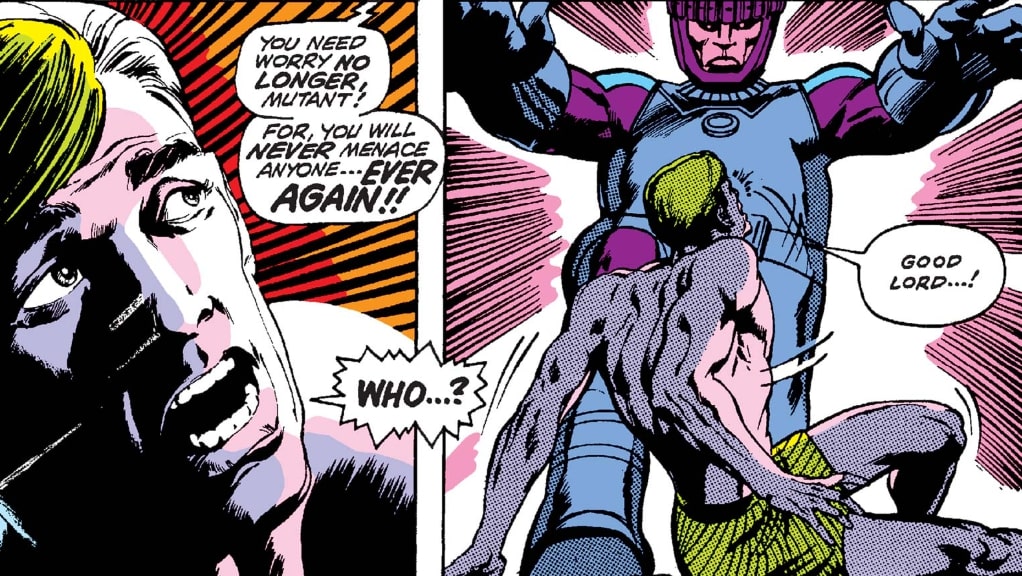
However I absolutely HAVE to mention the masterpiece that is Neal Adams drawing Beast dropping from a window.
Nobody else did stuff like this at the time!!!
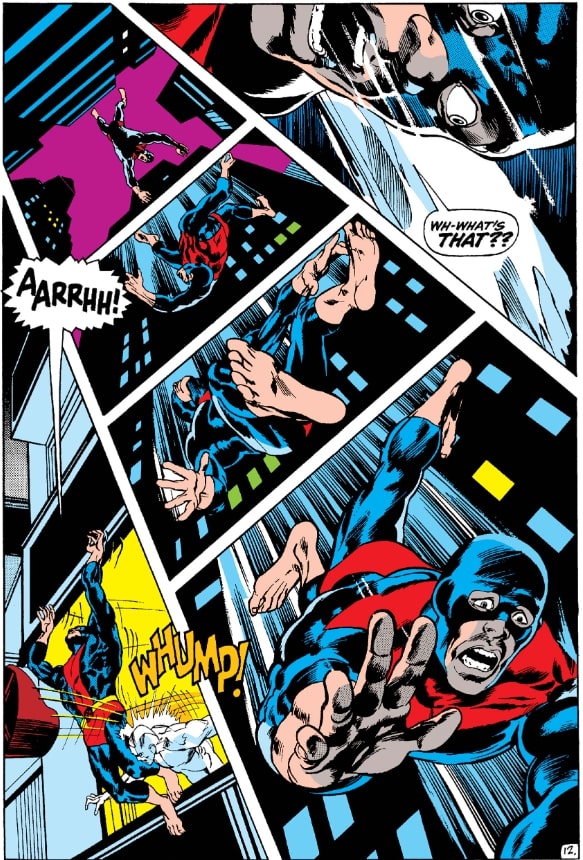
All the previous issues had backup stories to expand the origins of the X-Men.
Marvel Girl gets a short story where she explains how her power work… mostly through a series of jokes involving her being hot and dating guys.

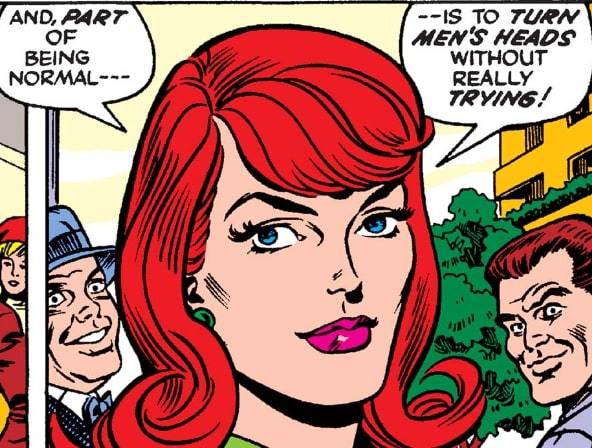
That was written by Linda Fite, wife of artist Herb Trimpe and creator of The Cat (the future Tigra).
Historical significance: 7/![]()
Obviously Havok will play a HUGE role in the series, and his inability to control his powers will be a major theme for the character… but it plays a secondary role in THESE specific issues.
Silver Age-ness: 8/![]()
On the Marvel scale, the Living Pharaoh is almost top Silver Age.
Does it stand the test of time? 0/![]()
I can’t praise Neil Adams high enough, but aside from the artwork in the latter issues… this was pretty bad. I can excuse the initial lack of focus because the writer changes, but only so much.
The Living Pharaoh is not particularly interesting: he starts off as a villain looking for power because… just because.
There is NO serious exploration of his motivations; he just raises more and more questions.
Is he just insane or there really were mutant pharaohs? How does he have goons that worship him if he never does anything?
How does he know about Alex having powers? How does he know they are connected?
How can he afford multiple secret bases in two continents? How does he have the technology to syphon off Alex’s powers? How does he have all those gadgets? Why does he have all these gadgets if his goons mostly use regular swords?
Where do the Living Monolith’s clothes come from!?
How close is this to the modern character? 7/![]()
The next appearance of the Living Pharaoh is VERY obscure. It’s from 1974’s “Supernatural Thrillers #9”, a Living Mummy story.
Trust me, finding scans of this was NOT easy!!!

The Living Pharaoh is here because he’s guarding a magic McGuffin that the Living Mummy needs. And I guess the idea that ancient pharaohs were mutants was just in his head.

The McGuffin apparently restored his powers after his fight with the X-Men.
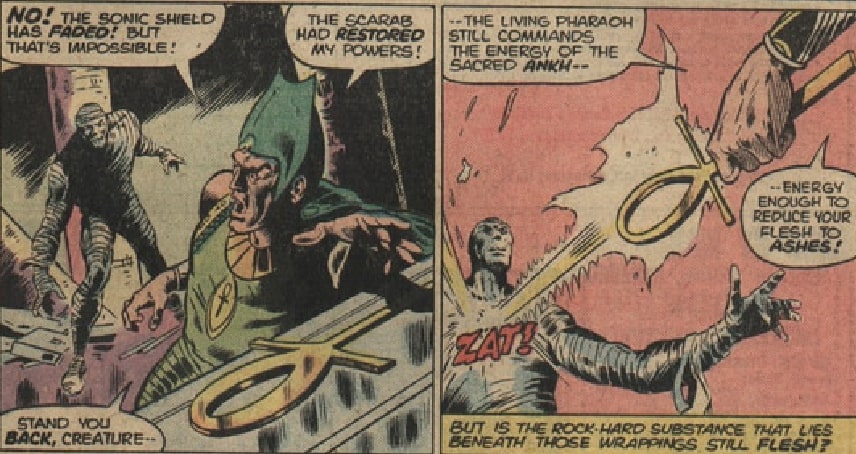
In case you were wondering: in a fight between a Living Mummy and a Living Pharaoh, the mummy wins.

He has a rematch with Havok in 1978’s Marvel Team-Up #69, courtesy of Chris Claremont.
Spider-Man is not impressed.
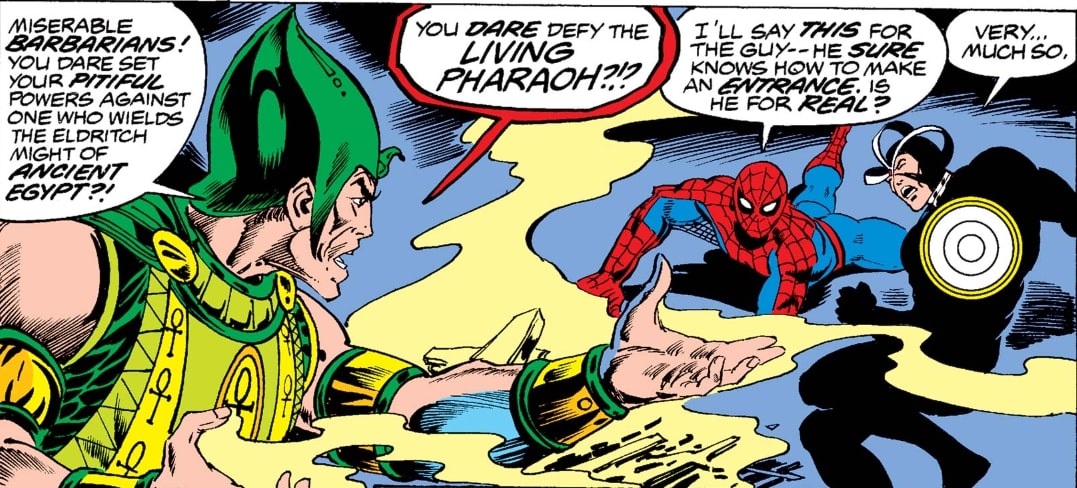
He also puts on the Living Monolith costume when he’s in human form, and…

…once again, Spider-Man has the best reaction.

Once he turns into the Living Monolith for good, however, it’s probably the first time he’s treated as a legitimate threat.
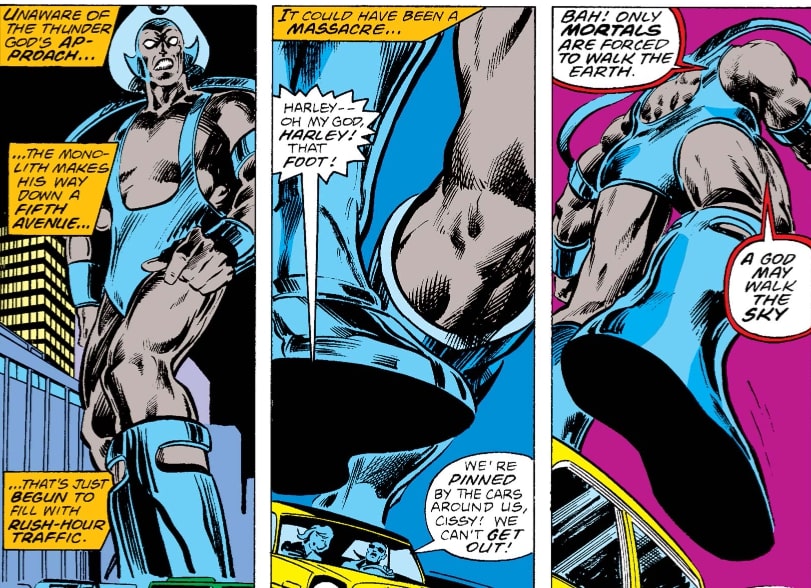
He even gives a hard time to freaking Thor (!!!), until the connection to Havok is severed and he seemingly vanishes.
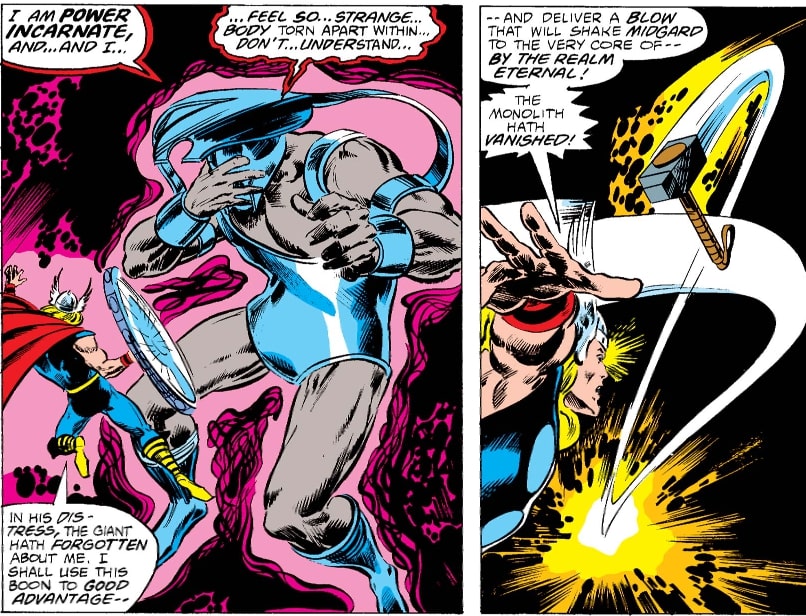
But he shows up on “Power Man & Iron Fist”, of all places, the following year.
At this point his Living Monolith form has completely replaced the Living Pharaoh as the primary focus of the character.

This story also makes his transformation independent from having Havok around, by revealing that the Living Pharaoh has access to a different McGuffin that can restore his powers.

Once without his power boost, however, he’s pretty pathetic.
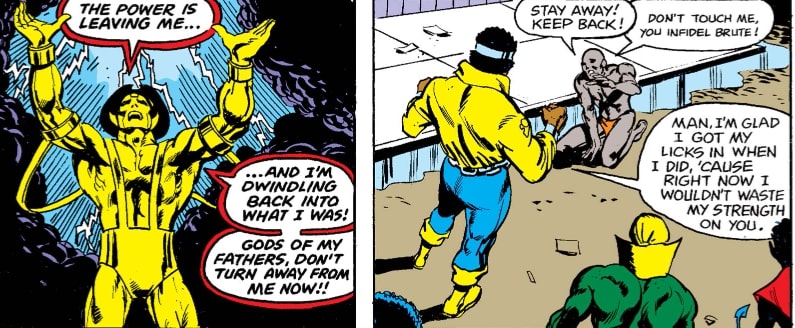
So we have a very campy supervillain who turns into an awesome giant, but he hasn’t had a single good story. So I can’t explain why in 1985 he was brought back to be the villain of his own graphic novel!

It’s a surprisingly good story! And it gives a surprising amount of backstory, from how his rather unusual theories about mutant pharaohs was NOT well received…

…to the tragic death of his wife right before he discovered he was a mutant himself.
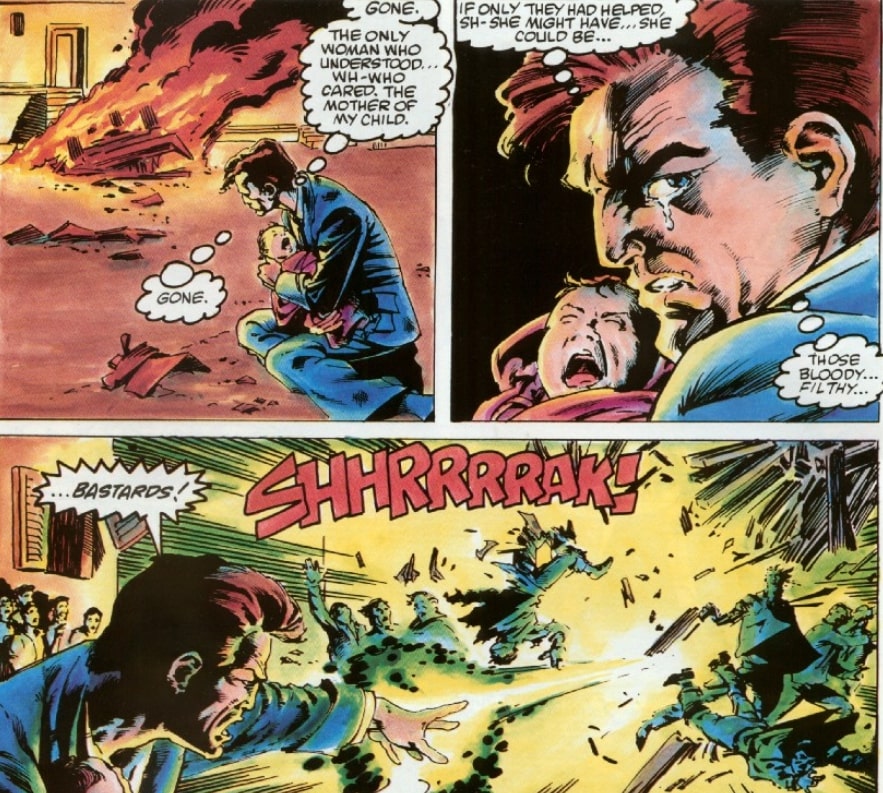
We also meet his daughter, who has some great scenes with the Human Torch that I found very amusing.
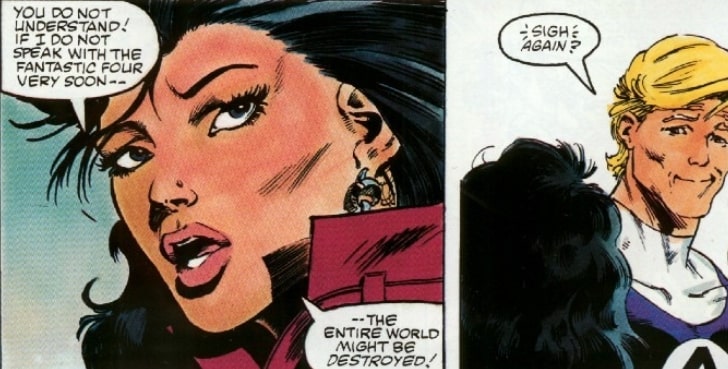
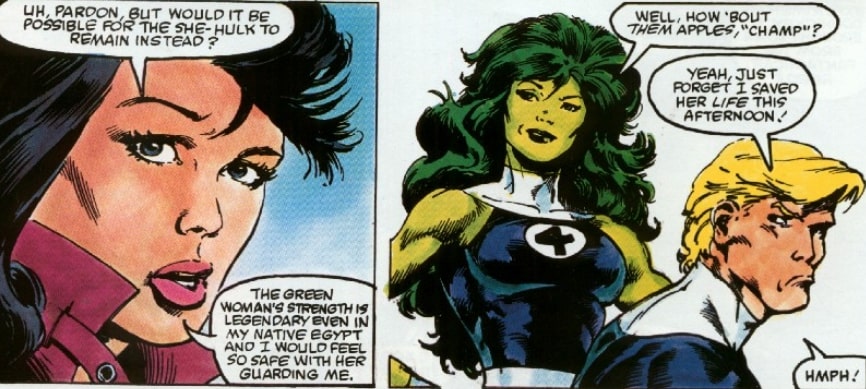
Turns out the daughter was actually working for him, as part of a plan to absorb the cosmic energy from the Fantastic Four… and he ends up killing her.
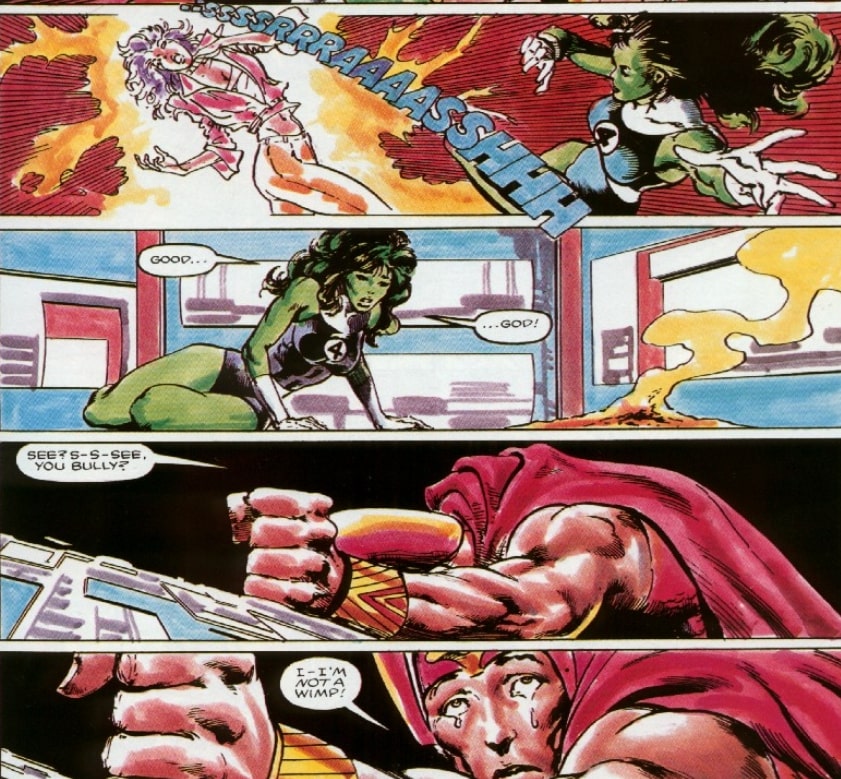
So as Living Pharaoh, he’s still kind of pathetic. But as the Living Monolith…

He’s eventually defeated, but there’s a problem: he just keeps growing and growing.

A problem that Thor solves by THROWING HIM INTO SPACE.

You would expect him to just be retired as a character. We even got a new Living Pharaoh in 1997 who had a slightly different design.
See if you can spot the difference from the original.

But of course he has returned a few times. I’ve already rambled long enough, but I have to mention Uncanny X-Men #376 from 2000, which is when Alan Davis and Terry Kavanagh filled some blatant blanks in the Living Pharaoh’s history.
I typically despise the attempt to link EVERYTHING to Mr. Sinister and Apocalypse that was going on at the time, but… the connection to Apocalypse was a no brainer given the Egyptian theme, and ANY explanation for WTF was going on with his connection to Havok is welcome.
